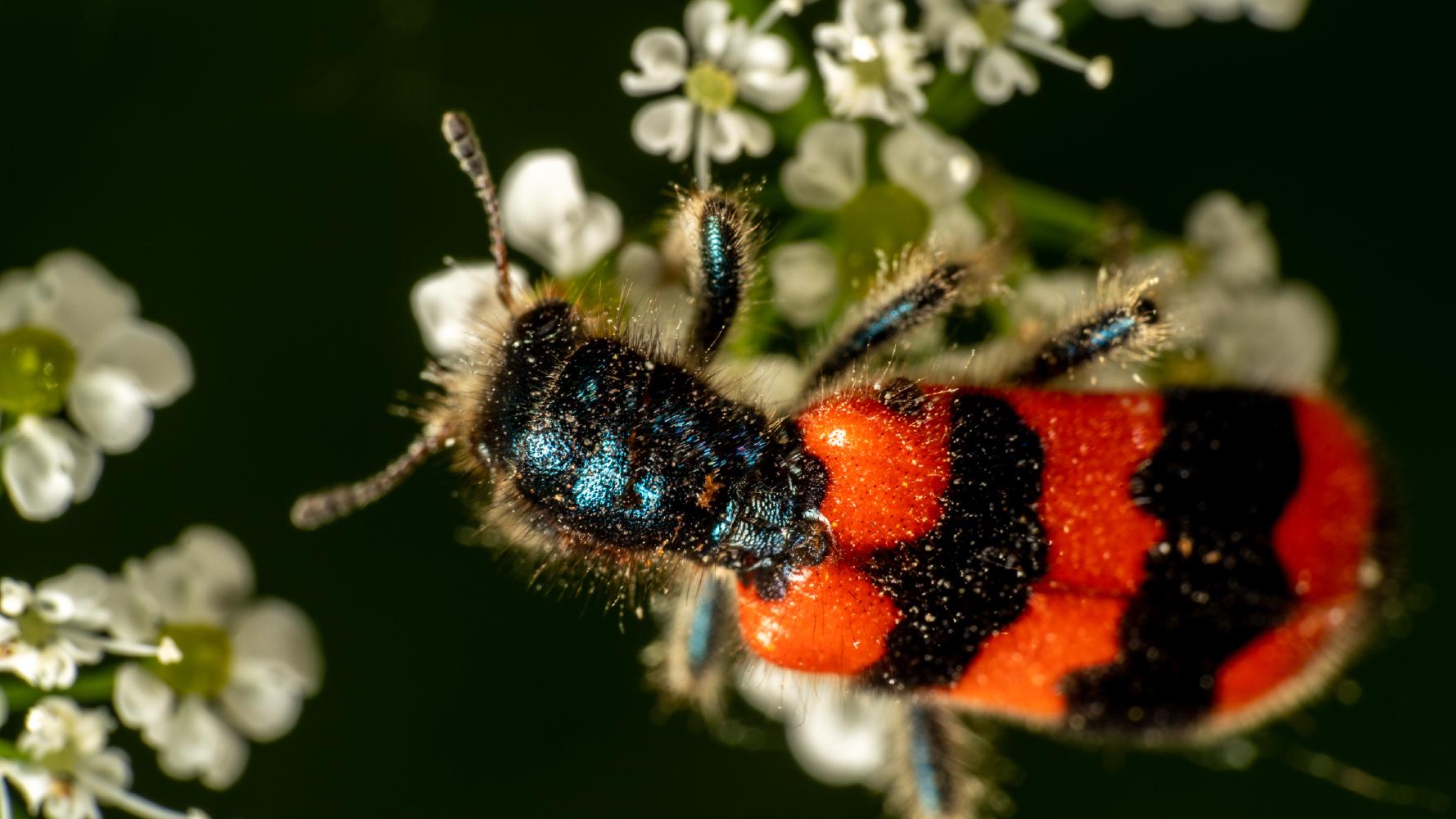Checkered Beetles
Lat. “Cleridae“
family
of order
“Beetles“
1 family, 2 species
Checkered beetles, also known as Cleridae, have a wide distribution across different continents and habitats. There are around 3,500 species in the world, with 500 species found in North America. They can be found in moist, sunny environments with plenty of flowering plants, as well as in forests where they prey on insects living under bark. Some species are “nest robbers” that hunt larvae of termites, bees, wasps, or grasshopper eggs. Ongoing research focuses on their role in integrated pest management, especially for controlling bark beetles. Additionally, research is being conducted on their impact on pollination in flowers. The taxonomy of Cleridae is still under investigation, with several subfamilies and genera being recognized.
Hierarchy
Distribution and ecology
Cleridae can be found in the Americas, Africa, Europe, the Middle East and even in Australia. There are approximately 3,500 species in the world and about 500 species in North America. Due to this wide distribution there are many different habitats in which the checkered beetles can be found. Many of the species are known as “flower visitors”, that prey on other flower visiting insects and also feed on pollen. These species are found in moist, sunny environments where flowering plants are found in abundance.Another habitat commonly inhabited by clerid beetles is trees. These “tree living species” are found in forests across the world with various climates and an array of easily preyed upon insects. They seek protection under the bark and hunt for other insects above and below the bark. The primary source of prey for these bark living hunters is bark beetles. The third type of clerid beetles is the “nest robbing species” which live in shrubbery and in trees. Unlike the tree living species these species do not actually burrow into the bark. Nest robbing species typically hunt termite, bee, and wasp larvae, and one particular species has been noted to prey primarily on grasshopper egg masses. Not all nest robbing species actively hunt live prey, some species for example prefer to feed only on dead honey bee larvae and adults.
Ongoing research
There is ongoing research with some clerid species. Forensic research is limited because of their late arrival on carrion, but members such as Thanasimus undatulus have been researched as a possible role in integrated pest management or IPM. Thanasimus undatulus is a predator of bark beetles. Some species of bark beetles such as the southern pine beetle and the mountain pine beetle can become pests to the lumber industry because in large numbers they can cause damage and kill live trees. Thanasimus undatulus has been researched as a possible biological control agent for these pests. Researchers and forestry officials have used bark beetle aggregation pheromones to attract the checkered beetle to specific trees. This causes the bark beetles to be overwhelmed, extensively preyed upon by the clerid beetles, and typically eliminated. There is also additional research being done pertaining to the impact of clerids on pollination in flowers.
Systematics
The genera of Cleridae are divided among several subfamilies, though some genera still defy easy classification. Several taxonomic schemes exist, recognizing for example a group around Neorthopleura as distinct subfamily Neorthopleurinae, or splitting off the Thaneroclerinae as distinct family, or circumscribing the Korynetinae sensu stricto or sensu lato. The following list of tribes and selected genera is thus preliminary. Some notable species are also listed. The oldest members of the family are Protoclerus and Wangweiella the late Middle Jurassic (Callovian) Daohugou bed in Inner Mongolia, China.
External links
Atlas of checkered beetles (Cleridae) of Russia Roland Gerstmeier publications on Cleridae Cleridae of Atlantic Canada
Ancestry Graph
Further Information
Copyright

This article uses material from the Wikipedia article Cleridae the free encyclopedia Wikipedia which is released under Creative Commons Attribution-ShareAlike 4.0 International License). On Wikipedia a list of authors is available.
